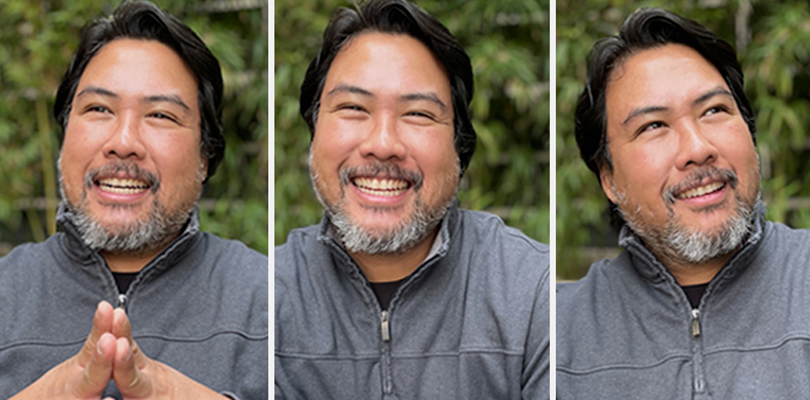The first time Ray Aspuria’s doctor told him his blood sugar levels were off the charts, he didn’t give it much thought. “I thought, ‘I’m young. It’s prediabetes, but not full blown. I’ll just continue walking outdoors and I’ll be good, right?’”
A manager for the State of California, Aspuria admits to eating poorly (he had a habit of eating a donut in the morning and Snickers in the afternoon), which led to bouts of falling asleep at inopportune times. “My wife and family said, ‘That’s the first sign of diabetes.’”
When Aspuria returned for his annual physical the following year, the news was even more grim. “My doctor said, ‘Your blood sugar is at organ damage level,’ and I was like, ‘I have four kids. I need to get this situated,’” he recalls.
Aspuria is from a Filipino-American family, and diabetes isn’t uncommon. In fact, his mother went from being prediabetic to having Type 2 diabetes more than a decade ago, and he has several cousins, uncles, and aunts with similar conditions. “When I showed my mom my blood sugar numbers, she said, ‘Holy moly!’”
Type 2 diabetes is the most common form of the chronic health condition (about 90-95% of people with diabetes have Type 2), which results in insulin resistance. It develops over years and is usually diagnosed in adults, though children, teens, and young adults are increasingly being diagnosed, according to the Centers for Disease Control.
It’s become increasingly more common as the American population has aged and become more overweight and obese, with one in seven American adults with Type 2 diabetes today, up from one in 20 in the 1970s. Type 2 diabetes carries a host of health risks, including nerve damage, vision loss, kidney disease and heart disease, as well as foot and toe amputations.
It’s also costing us more in health care. One in four health care dollars goes to treat diabetes, which costs the nation $237 billion annually, along with $90 billion in reduced productivity. And if you have diabetes, your medical costs are twice as much compared to those without diabetes.
For Aspuria, as a member of the CalPERS Health Program, his health insurance provider Kaiser Permanente offers a diabetes prevention program at no additional cost. In fact, all CalPERS health plans offer such a program to members. Following his doctor visit, during which he learned his A1C level was at a frightening 9.3% (less than 5.7% is considered normal) and he weighed in at 278 pounds, a diabetic response team reached out.
“They gave me all the tools I’ve needed and have checked up with me annually to go over my blood sugar results,” says Aspuria. Those tools include a consultation with a nutritionist to discuss diet, exercise, and daily goals, along with a fitness program. Aside from the medication that helps regulate his blood sugar, Aspuria doesn’t pay extra for the intervention.
Two years after his wake-up call at the doctor’s office, Aspuria has lost 50 pounds, drinks water instead of eating candy and sweets, uses resistance bands at home and the office, and walks about a mile during the workday.
One of the biggest changes he’s made is limiting his white rice intake. “The Filipino diet is heavy on rice, and white rice converts to sugar at higher rates,” says Aspuria. Instead, he opts for brown or basmati rice, which are more compatible with his diet needs. At home, his family has incorporated diabetic-centric cooking into meals. And instead of eating fast food while in the office, he brings leftovers so he knows what he’s eating.
“I didn’t see how it affected my health until I looked at pictures and saw I was fat,” Aspuria recalls. “With the changes I’ve made diet and exercise-wise, I don’t have to worry about not being around for my kids for a while.
“It’s empowering to have control over my body.”
Learn More About Diabetes Prevention
The CalPERS Diabetes Prevention Program is designed to slow and prevent Type 2 diabetes among CalPERS members who have prediabetes, a condition in which a person’s blood sugar level is higher than normal, but not yet high enough for the individual to be considered diabetic.
Learn more about your health care plan’s low-cost and no-cost programs through the Workplace Wellness (PDF) publication.

